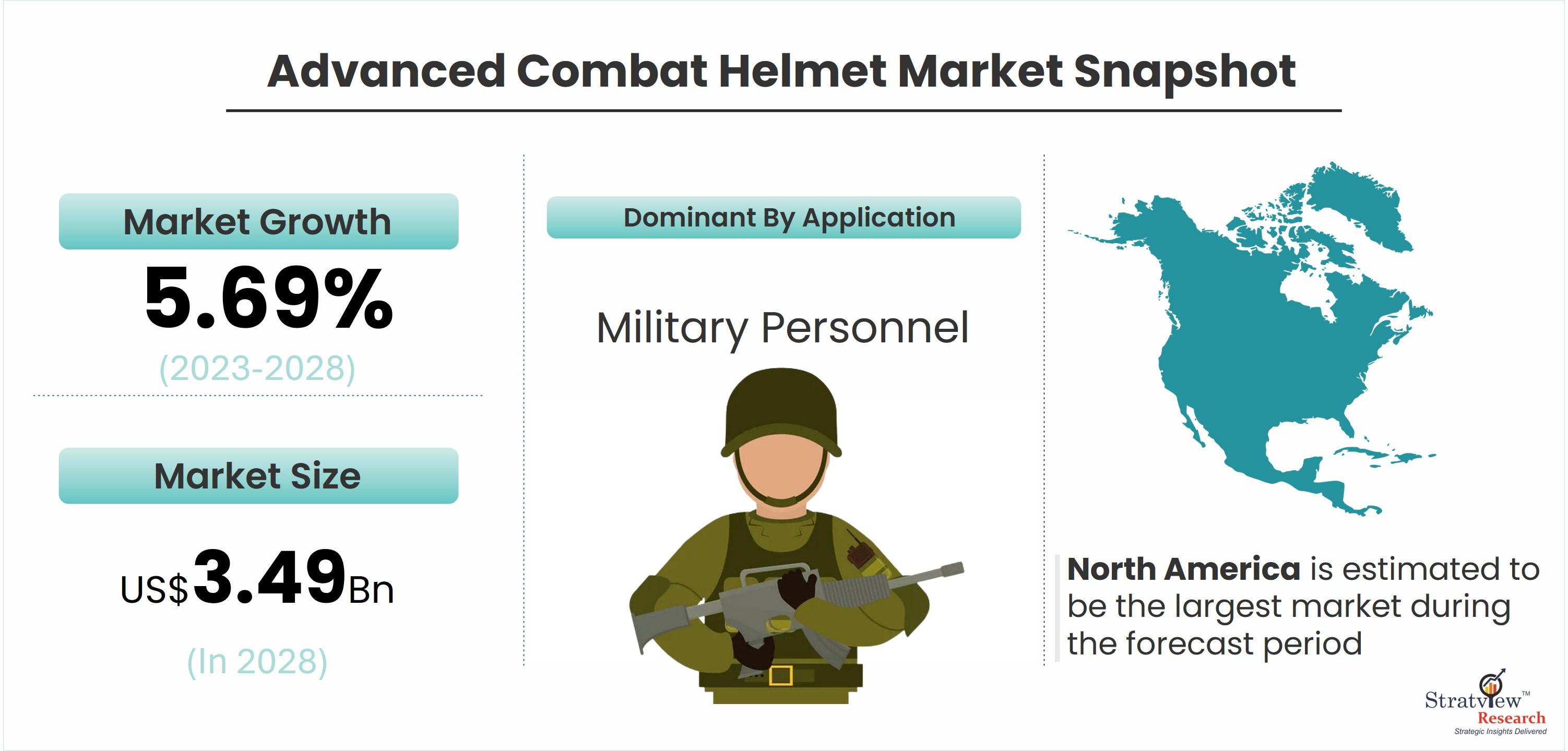Future Trends in the Advanced Combat Helmet Market

The advanced combat helmet market is poised for significant evolution, driven by technological advancements, changing warfare dynamics, and increasing investments in defense modernization. This article explores the future trends that are set to shape the ACH market, highlighting the innovations and developments that will define the next generation of soldier protection.
According to Stratview Research, the advanced combat helmet market was estimated at USD 2.5 billion in 2022 and is likely to grow at a CAGR of 5.69% during 2023-2028 to reach USD 3.49 billion in 2028.
Integration of Smart Technologies
One of the most transformative trends in the ACH market is the integration of smart technologies. Future helmets will increasingly incorporate sensors, augmented reality (AR) displays, and advanced communication systems. These smart features enhance situational awareness by providing soldiers with real-time data on their surroundings, threat detection, and tactical information. For instance, AR displays can overlay critical information on the visor, such as maps, navigation cues, and enemy positions, enabling soldiers to make quicker and more informed decisions on the battlefield.
Advanced Materials and Lightweight Design
The development of new materials will continue to play a crucial role in the future of ACH. Advances in materials science are leading to the creation of lightweight, high-strength composites that offer superior ballistic protection. Materials such as graphene, carbon nanotubes, and advanced ceramics are being explored for their potential to enhance helmet performance. The goal is to achieve a balance between protection, weight, and comfort, ensuring that helmets provide maximum safety without compromising mobility and endurance.
Modular and Customizable Designs
Modularity and customization will become increasingly important in the design of advanced combat helmets. Future helmets will be designed with modular components that allow soldiers to easily attach and detach accessories such as face shields, visors, night vision goggles, and communication devices. This flexibility ensures that helmets can be tailored to specific mission requirements, enhancing their versatility and functionality. Additionally, customizable fit mechanisms and improved ergonomics will enhance comfort, enabling soldiers to wear helmets for extended periods without fatigue.
Enhanced Communication and Connectivity
Future ACH will feature enhanced communication capabilities, integrating advanced radios and data-sharing technologies. This trend is driven by the need for seamless communication and coordination in modern combat scenarios. Helmets will incorporate built-in communication systems that facilitate clear and secure voice and data transmission, even in challenging environments. These systems will also be compatible with broader military communication networks, ensuring interoperability and effective command and control.
Focus on Non-Combat Applications
While advanced combat helmets are primarily designed for military use, there is growing interest in their application in non-combat roles. Law enforcement agencies, first responders, and private security firms are recognizing the benefits of advanced helmet technologies. The market is likely to see increased demand from these sectors, driven by the need for enhanced protection and situational awareness in a variety of operational contexts.
Sustainability and Environmental Considerations
Sustainability is emerging as a key consideration in the design and manufacturing of ACH. The use of eco-friendly materials and manufacturing processes that minimize environmental impact will become more prevalent. This trend aligns with broader defense industry efforts to adopt sustainable practices and reduce the carbon footprint of military operations.
Conclusion
The future of the advanced combat helmet market is marked by significant innovation and development. The integration of smart technologies, advanced materials, modular designs, and enhanced communication capabilities will define the next generation of ACH, providing soldiers with improved protection, situational awareness, and operational efficiency. As these trends unfold, the ACH market will continue to evolve, meeting the demands of modern warfare and expanding into new applications. The focus on sustainability and environmental considerations will further shape the industry's future, ensuring that advanced combat helmets contribute to a more sustainable and effective defense sector.
- Questions and Answers
- Opinion
- Story/Motivational/Inspiring
- Technology
- Art
- Causes
- Crafts
- Dance
- Drinks
- Film/Movie
- Fitness
- Food
- Παιχνίδια
- Gardening
- Health
- Κεντρική Σελίδα
- Literature
- Music
- Networking
- άλλο
- Party
- Religion
- Shopping
- Sports
- Theater
- Wellness
- News
- Culture
- War machines and policy

